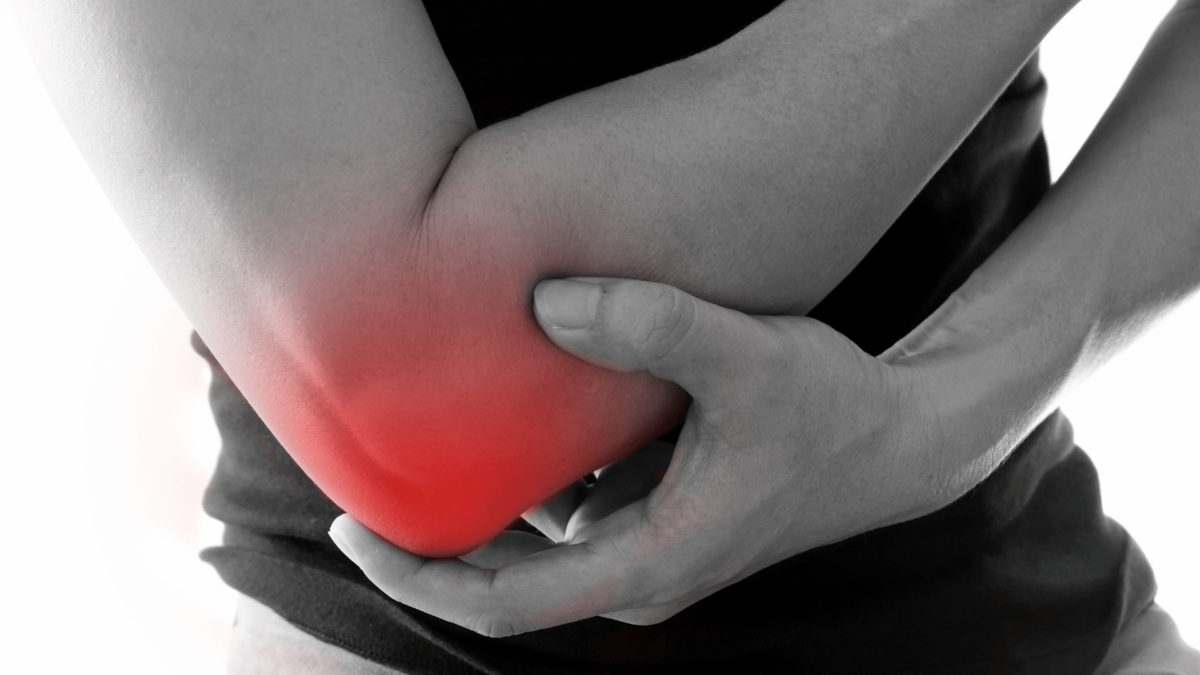
How to Find the Best Orthopedic Knee Surgeons Near Me?
January 27, 2025
Doctor for Shoulder Problems | Your Guide to Specialized Care
February 3, 2025Elbow pain can significantly affect your ability to perform everyday tasks—anything from picking up a glass of water to typing at your desk. Despite its relatively small size, the elbow is a complex joint that allows for critical movements like flexion, extension, and rotation. When something goes wrong—be it an injury or a degenerative condition—it may be time to seek help from a doctor for elbow pain. In this post, we’ll explore common causes of elbow pain, what to expect from an orthopedic evaluation, and the variety of treatment options available to help you find relief.
Don’t Let Elbow Pain Hold You Back: Click Here
1. Common Causes of Elbow Pain
Elbow pain can arise from a variety of factors, ranging from overuse injuries to inflammatory conditions. Below are some of the most frequent culprits:
- Tennis Elbow (Lateral Epicondylitis)
Repetitive wrist and arm motions (often related to tennis, hence the name) can strain the tendons on the outside of your elbow, leading to pain and tenderness. - Golfer’s Elbow (Medial Epicondylitis)
Similar to tennis elbow but occurring on the inner side of the elbow, golfer’s elbow is commonly seen in sports and occupations involving repetitive wrist flexion. - Bursitis
Inflammation of the fluid-filled sacs (bursae) that cushion the joint can cause swelling, redness, and discomfort in the elbow. - Elbow Fractures or Dislocations
Trauma—such as a fall onto an outstretched hand—may result in fractures or dislocations that require immediate medical attention. - Repetitive Strain Injuries
Certain jobs or physical activities that involve repetitive movements of the arm and wrist can lead to chronic strain and persistent elbow pain.
Regardless of the specific cause, prolonged elbow pain should not be ignored. Early intervention can help avoid more serious complications down the line.
2. Why Consult a Specialized Orthopedic Doctor?
Although some minor elbow aches can be managed with rest and over-the-counter painkillers, persistent or severe pain often demands an expert’s attention. Here’s why a specialized orthopedic doctor is key:
- Comprehensive Evaluation: Orthopedic specialists have in-depth knowledge of the musculoskeletal system, enabling them to diagnose even subtle issues.
- Personalized Treatment Plans: A specialist can tailor treatments—from conservative measures like physical therapy to more advanced interventions—based on your individual needs.
- Access to Advanced Techniques: Orthopedic doctors stay up to date with the latest innovations, including minimally invasive procedures, specialized injections, and state-of-the-art therapeutic modalities.
- Team-Based Approach: You may benefit from a coordinated care team—including physical therapists, pain management physicians, and rehabilitation specialists—for a holistic approach to healing.
3. The Evaluation and Diagnosis Process
When you visit an orthopedic doctor for elbow pain, you can expect a detailed assessment that typically includes:
- Medical History Review
The doctor will ask about your symptoms, when the pain started, your occupational or sporting activities, and any previous elbow injuries. - Physical Examination
Through specific clinical tests—like checking your elbow’s range of motion, stability, and any points of tenderness—the specialist gathers clues about what might be causing the pain. - Imaging Studies
- X-Rays: Provide insight into bone structures, fractures, or arthritis.
- MRI or Ultrasound: Reveal soft-tissue injuries, such as ligament or tendon tears.
- CT Scans: Offer detailed views of complex bone or joint problems if necessary.
- Additional Diagnostic Tests
In some cases, blood tests may be used to rule out inflammatory conditions or infections that contribute to elbow discomfort.
Don’t Let Elbow Pain Hold You Back: Click Here
4. Treatment Options
Orthopedic doctors typically explore conservative treatments before recommending surgery, unless the condition is severe or urgent. A customized plan might include:
- Non-Surgical Interventions
- Physical Therapy: Strengthening and stretching exercises to improve flexibility and reduce strain.
- Bracing or Splinting: Stabilizes the elbow, allowing inflamed tissues to heal.
- Medications: Over-the-counter NSAIDs or prescription drugs to manage inflammation and pain.
- Injections: Corticosteroid or platelet-rich plasma (PRP) injections can deliver targeted relief and aid in tissue repair.
- Surgical Procedures
In cases where conservative methods are ineffective or structural damage is severe, surgery may be recommended. Minimally invasive arthroscopic procedures can repair torn tendons or ligaments and remove inflamed tissue. More complex operations, like tendon reconstruction, may be necessary for extensive injuries.
5. Recovery and Rehabilitation
Recovery times vary widely, depending on the complexity of the injury and the type of treatment:
- Physical Therapy: Often continues for several weeks or months, focusing on regaining strength, improving range of motion, and preventing recurrence.
- Pain Management: This may include oral medications, topical treatments, or periodic follow-ups for additional injections if needed.
- Lifestyle Modifications: Adjusting your workstation, sports technique, or daily activities can help protect the elbow from re-injury.
- Follow-Up Appointments: Ongoing check-ins with your orthopedic doctor ensure that the healing process is on track and that any necessary adjustments can be made promptly.
Doctor for Elbow Problems: Conclusion
Elbow pain is more than just a temporary inconvenience—it can impede work, hobbies, and even simple tasks like lifting a cup of coffee. Consulting a specialized orthopedic doctor for elbow pain ensures you receive a thorough evaluation, an accurate diagnosis, and a treatment plan tailored to your unique situation. From conservative methods like bracing and physical therapy to advanced surgical interventions, these specialists offer effective pathways to relief and long-term elbow health.
If you’ve been grappling with elbow pain that won’t resolve on its own, it’s time to seek expert assistance. Early intervention not only accelerates healing but also minimizes the risk of complications. Remember, the sooner you address the root cause of your discomfort, the sooner you can get back to the activities you enjoy—without the burden of persistent elbow pain.
FAQ: Doctor for Elbow Problems
When should I see a doctor for elbow pain?
If your elbow pain lasts longer than a few days, gets worse over time, or makes it difficult to perform everyday tasks (like lifting objects or bending your arm), consult a healthcare professional. Early intervention often leads to better outcomes.
Do I need a referral to visit an orthopedic doctor for elbow pain?
This varies depending on your insurance plan. Some require a referral from your primary care physician, while others let you book directly with a specialist. Check your insurance policy or call your provider for details.
Are there non-surgical treatments available for elbow pain?
Absolutely. Many elbow issues respond well to conservative approaches such as rest, physical therapy, bracing, over-the-counter anti-inflammatory medications, and injections. Surgery is typically considered only if these methods don’t alleviate the pain or if structural damage is severe.
What can I expect during an orthopedic evaluation for elbow pain?
An orthopedic doctor will review your medical history, assess your range of motion, and perform specialized tests to identify the cause of your discomfort. Imaging studies like X-rays or MRIs may be ordered for a detailed view of bones, tendons, or ligaments.
How long does it take to recover from elbow surgery if it’s needed?
Recovery depends on the extent of the injury and the type of surgery. Some arthroscopic procedures allow you to return to light activities within a few weeks, whereas more extensive operations might require months of rehabilitation and physical therapy.
Can lifestyle changes help prevent future elbow problems?
Yes. Using ergonomic tools, practicing proper form during sports or repetitive tasks, warming up before physical activity, and regularly strengthening your arm muscles can all help reduce the risk of recurrent elbow injuries.




